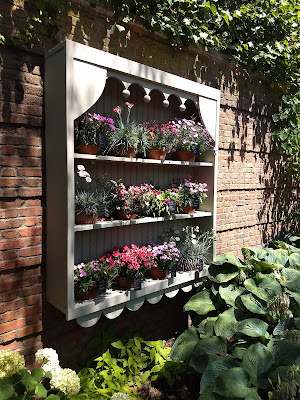At Backyard Patch Herbs we are always trying to be helpful and informative about why herbs are so great. I know, I think they are really great, but you only have to go as far as you want! Some of the things we are trying to do to be more helpful, is demonstrate the easy ways to use herbs at home.
Food prices are going up so we all need to get the most out of our food budget, the Herb Mixes of Backyard Patch Herbs are still a reasonable price with a long shelf life (18 guaranteed) even though they have no preservatives. Some of the quickest and easiest to use for cooking are our rubs, marinades and dressings.
I created some fliers about how to use herb marinades. rubs and dressings which I will share over the next few days along with a few recipes. We will start with marinades to help get the most flavor even from a cheap cut of meat.
MARINADES
Marinades are particularly well suited to beef and game, but can be used to liven up the mild flavor of chicken and all its relatives. Marinades are created using a blend of oil, vinegar and seasonings that is then used as a soak for the item before it is cooked. The ratio is generally 2/3 cup oil to 1/4 cup vinegar (or lemon juice) and herbs to taste usually around 2 tablespoons of dry herbs, more if you are using fresh. Add the dry herbs to water before adding them to the vinegar and oil. If they are fresh just chop fine.
The high acid content of a marinade
(from vinegar) helps tenderize meat as well as impart wonderful flavors.
Always prepare your marinade in a
shallow non-reactive dish or pan just large enough to hold the meat
comfortably. Be sure to turn the meat so
the flavor will permeate all surfaces evenly.
Very thin cuts of meat can be marinated an hour or so at room
temperature, but roasts and larger cuts should stand longer, even up to two
days in the refrigerator. Just remember
to turn the meat every few hours and let it return to room temperature before
cooking.
When marinating chicken, a few hours
to overnight is generally long enough.
Lemon is a perfect flavor for chicken so substituting Lemon juice for
the vinegar is perfect. If you are
marinating fish no more than an hour in the marinade is recommended. The soft flesh of fish easily absorbs
marinade and the acid actually “cooks” the fish, so too long can damage the
texture and flavor. It is recommended to place the marinade on the fish and
then cook immediately in foil, or use as a baste while grilling.
Marinade on vegetables does not
need as much acid as meats and can be made with just oil. With vegetables, one can soak them in the
marinade or brush it on during grilling. Adding a bit of honey can sweeten bitter vegetables.
Backyard Patch Herbs makes a selection of Herb Seasonings to create marinades as well as dressings that double as a marinade. For a complete list of these, check out our on-line catalog: marinades and dressings.
The Marinade Mixes at BYP include one specifically for chicken as well as several that can be used on any kind of meat or on vegetables.
Lemon Sage Turkey Rub
- 1 package BackyardPatch Lemon-Sage Marinade
- 3 Tbls Lemon Juice
- 4 Tbls olive oil
- 1 ½ tsp salt
- 2 tsp fresh ground pepper
DIRECTIONS
Whisk together Lemon-Sage
Marinade, lemon juice, olive oil, salt, and pepper to make a paste. Rub mixture over and under skin of turkey.
Roast as usual.
Mediterranean Marinade
- 1 ½ Tbls. BYP Italian Dressing/Marinade Mix
- 1/3 cup cider vinegar
- 1/3 cup olive oil
- 2 Tbls. lemon juice
- 1 tsp. oregano
- 1 tsp. grated lemon peel
Mix together. Use to marinade meat, poultry, seafood or vegetables. Can also be a baste on meats and vegetables.
Grilled Provençal Shrimp Skewers
- 1 1/2pounds peeled and deveined large shrimp
- 1/2cup mayonnaise
- 2 teaspoons Backyard Patch Provencal Marinade
- ½ tsp kosher salt
- ¼ tsp black pepper
DIRECTIONS
Heat grill to medium-high. In a medium
bowl, toss the shrimp with the mayonnaise, Herbs de Provence, salt and pepper. Thread the shrimp onto 8 skewers (soaked if
wooden) and grill, uncovered, until cooked through, 3 to 4 minutes per side.



.jpg)
.jpg)












.jpg)
.jpg)
.jpg)
.jpg)

.jpg)